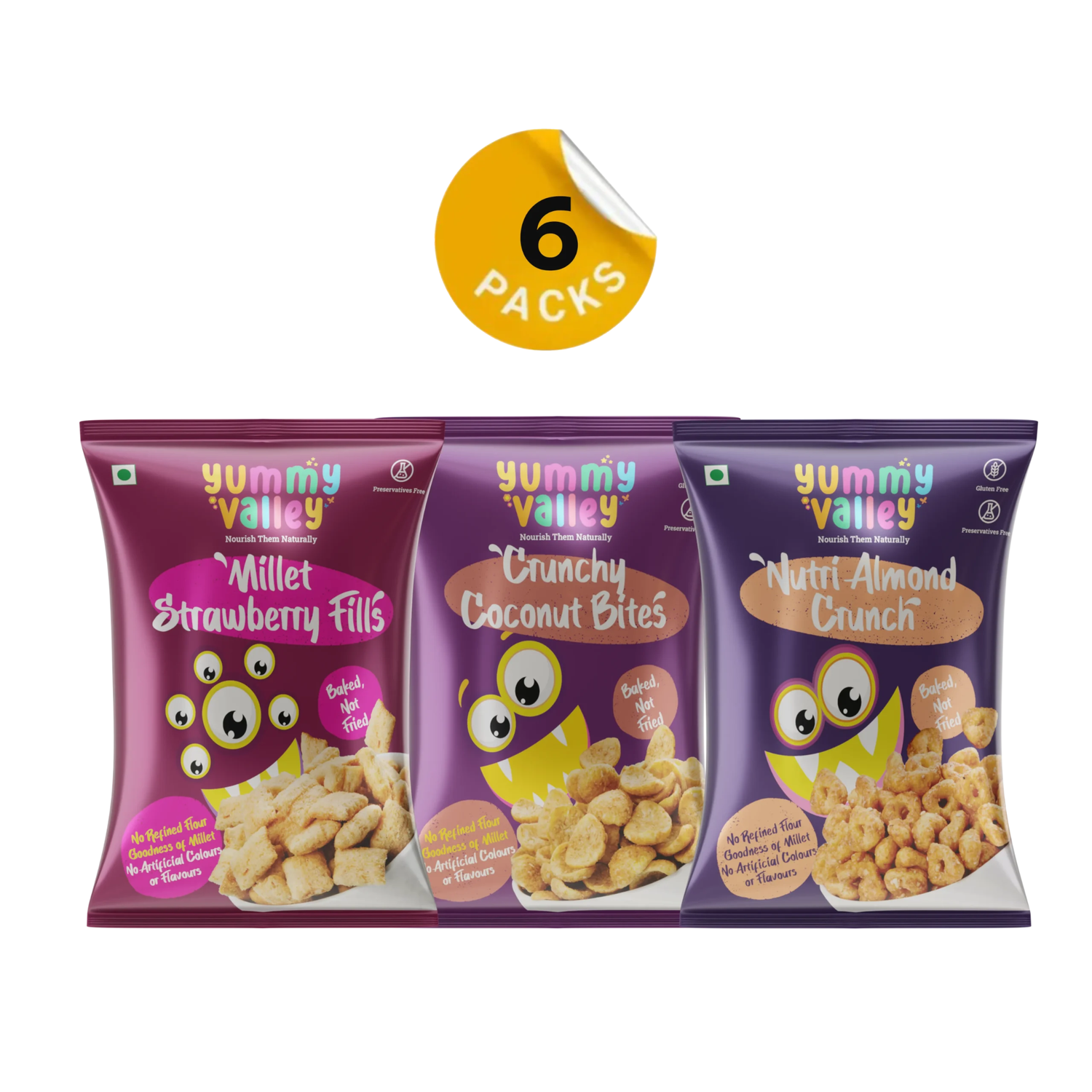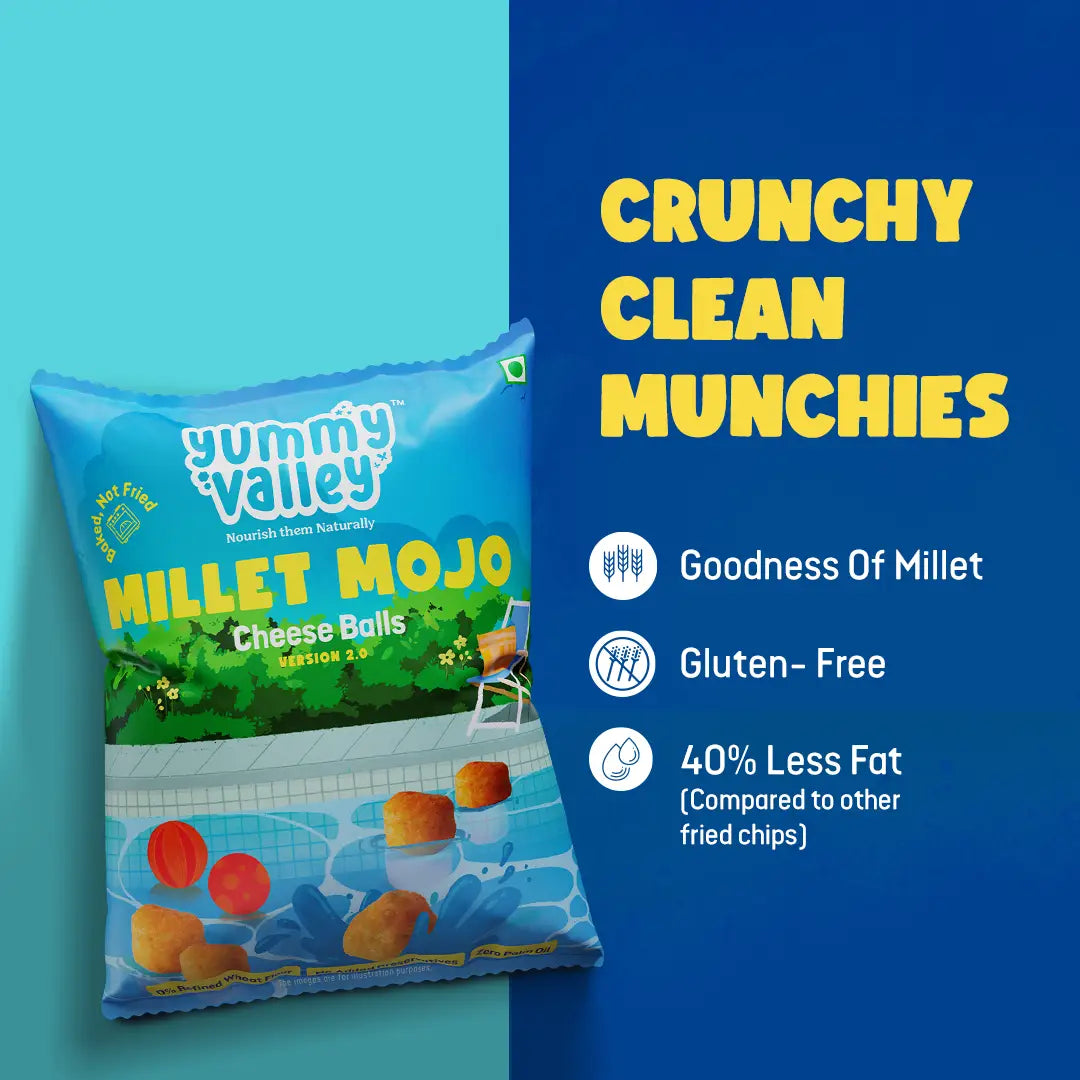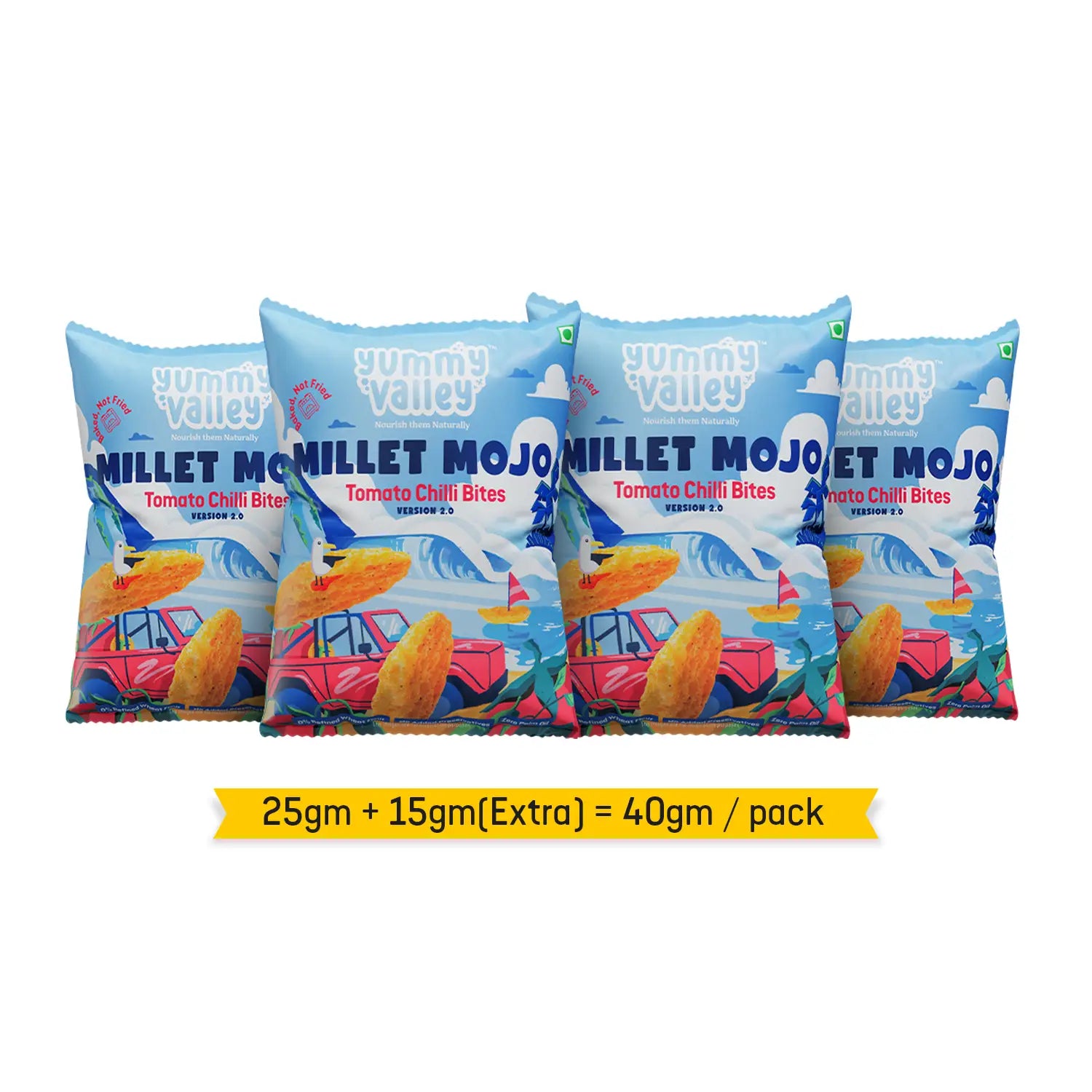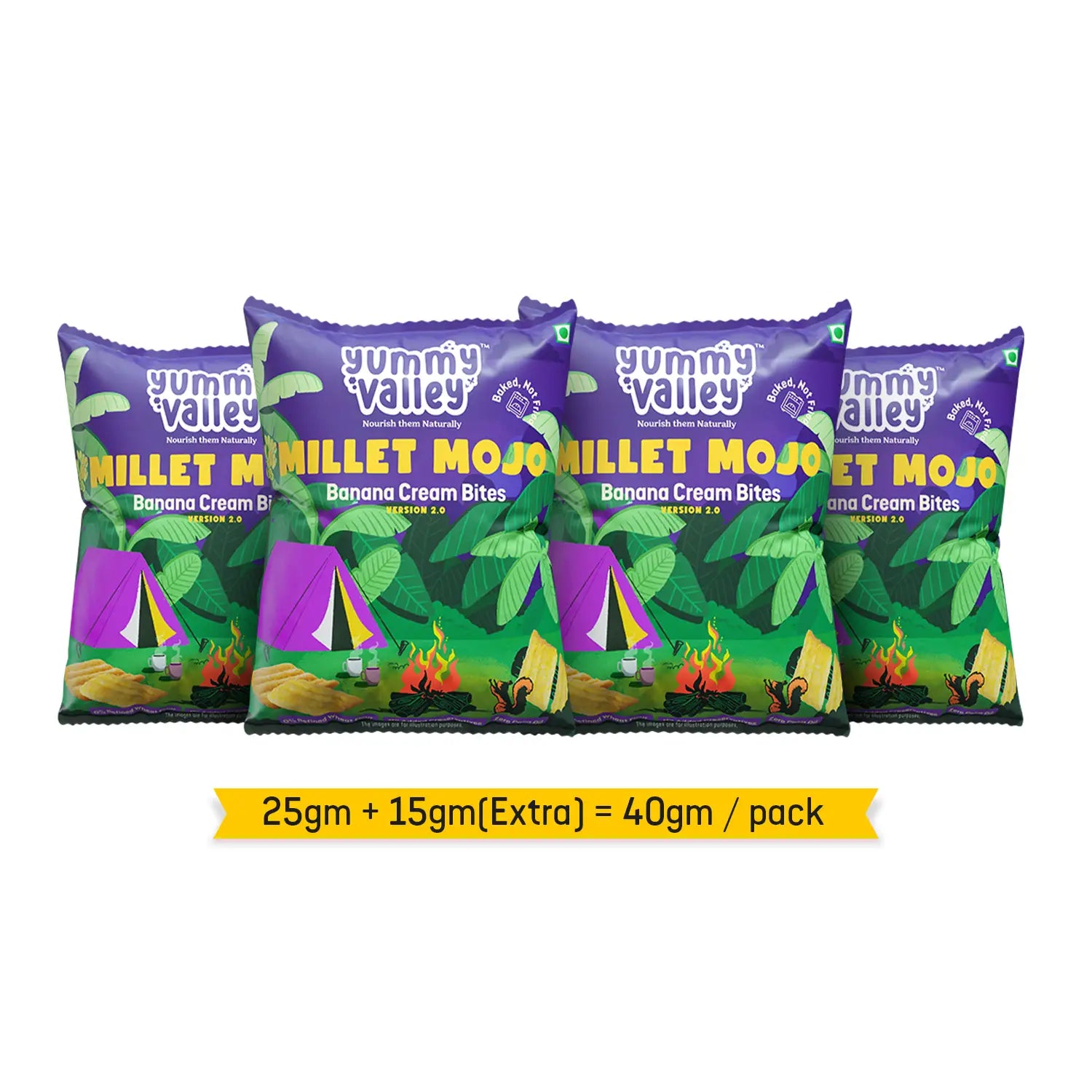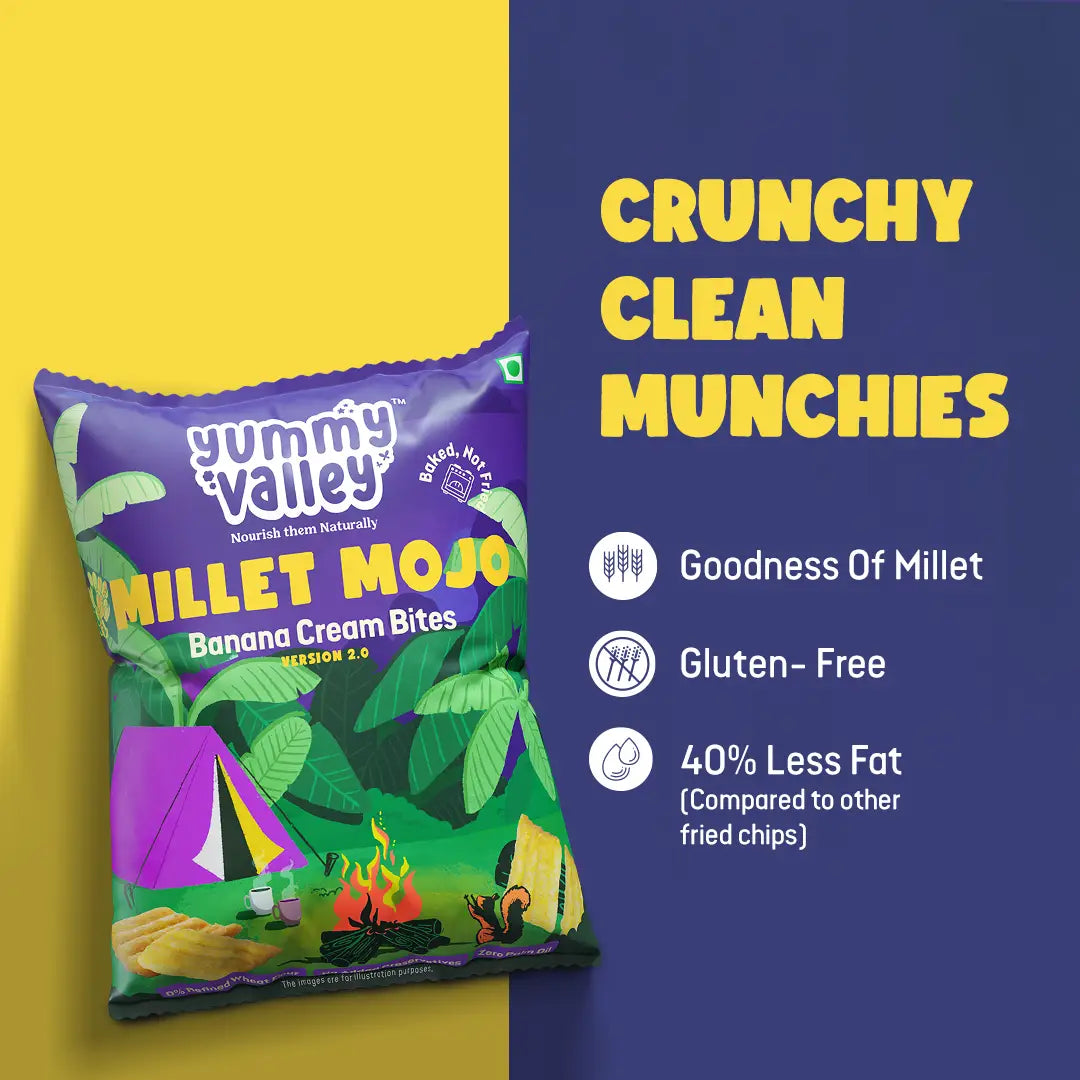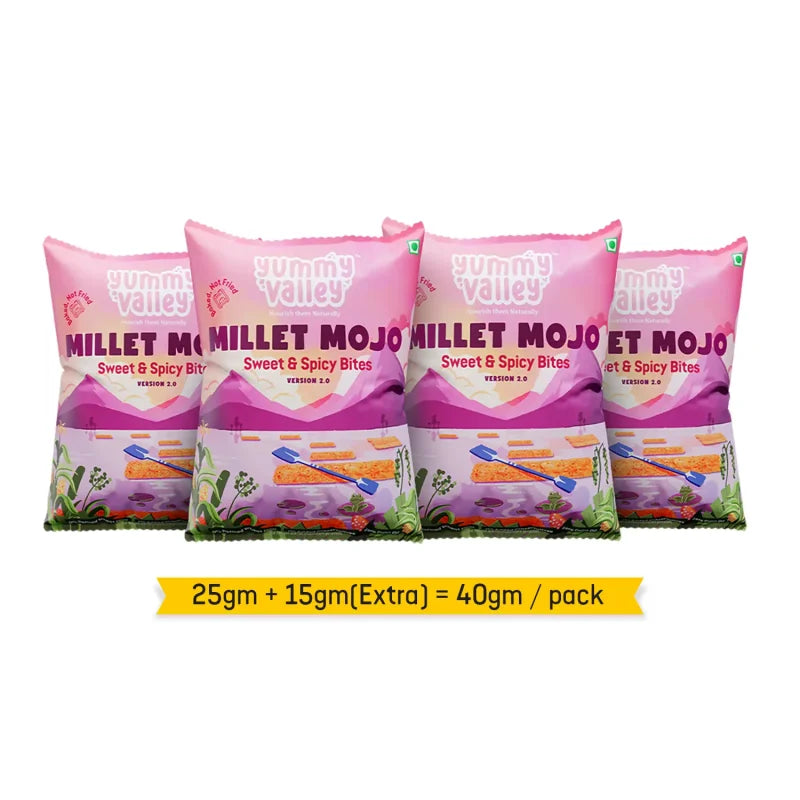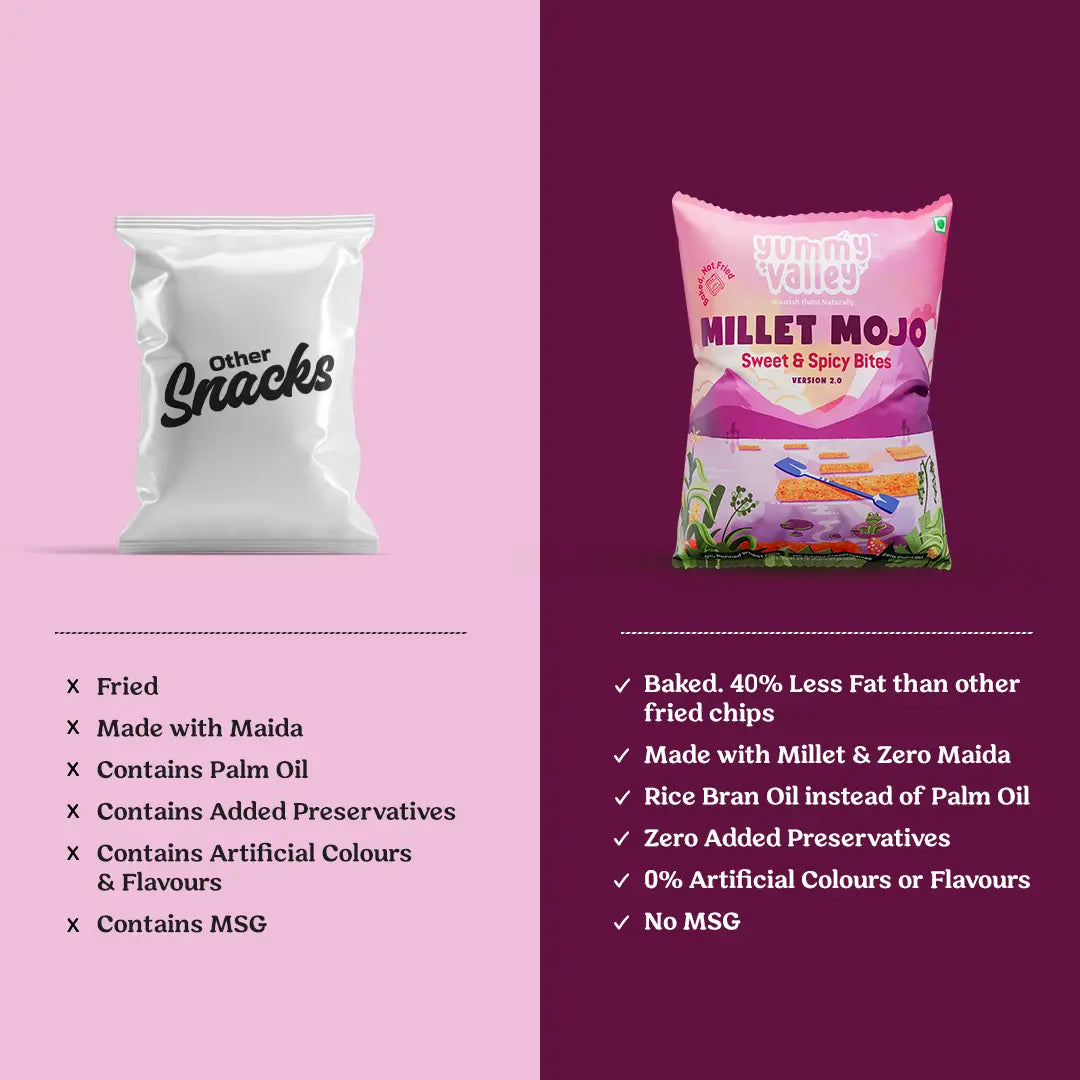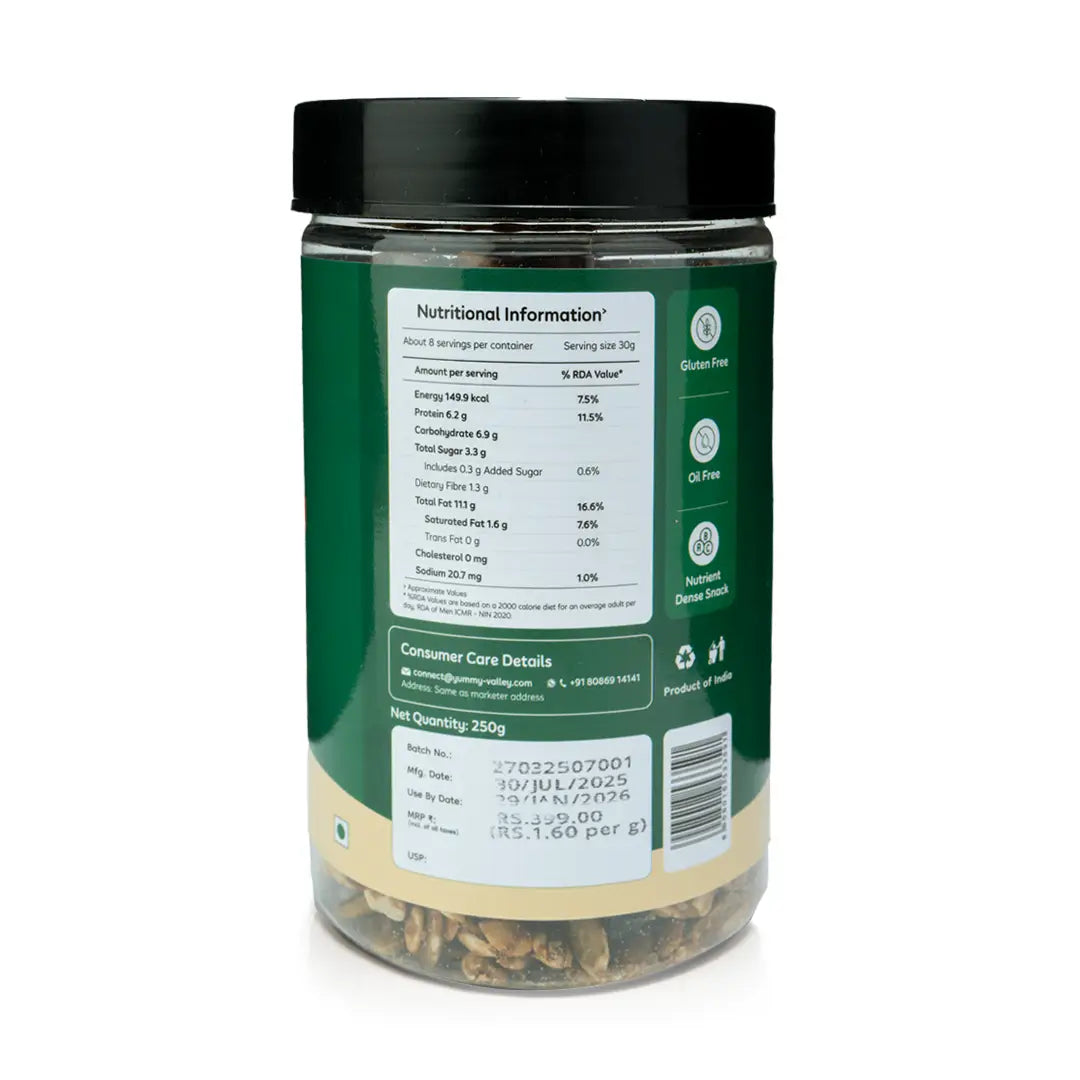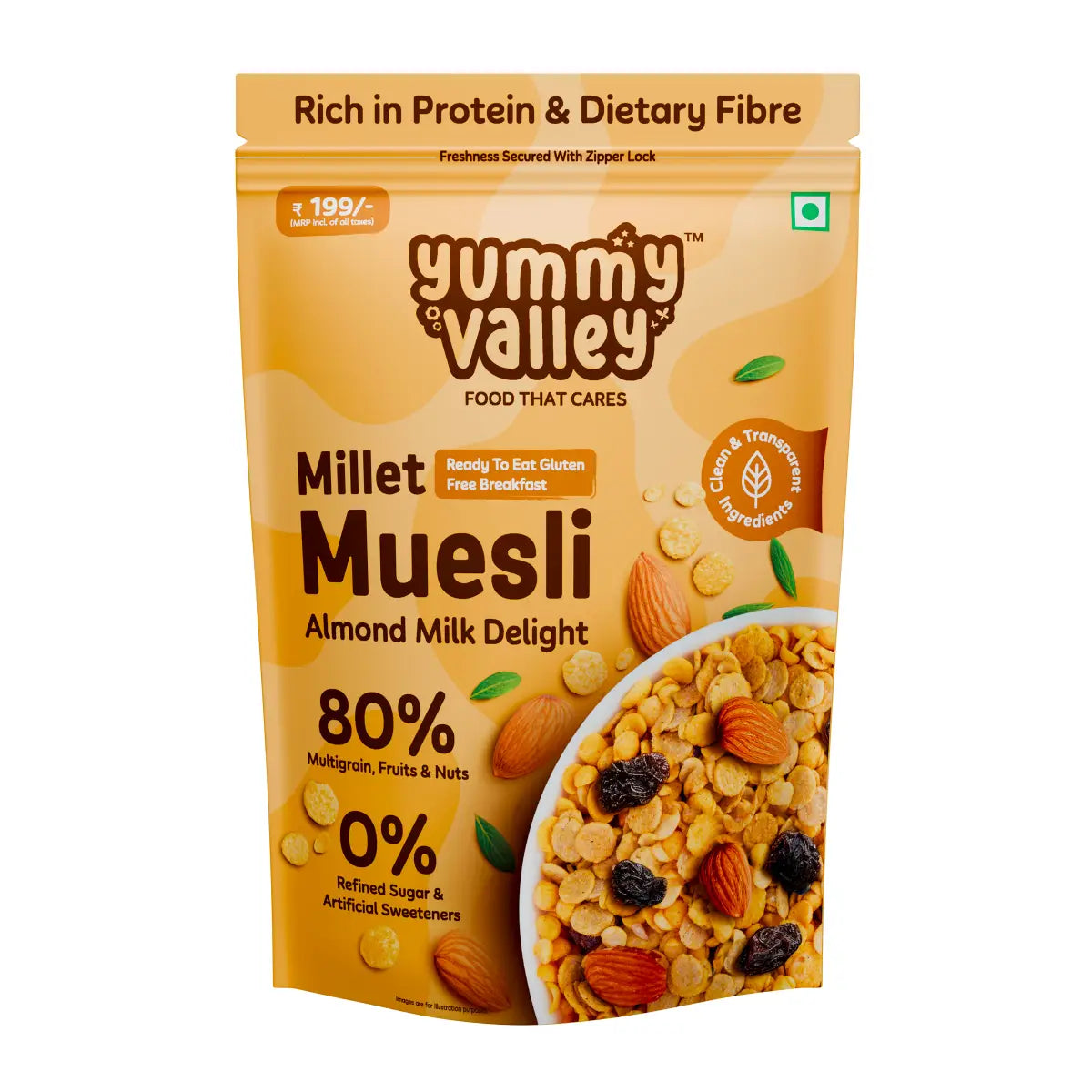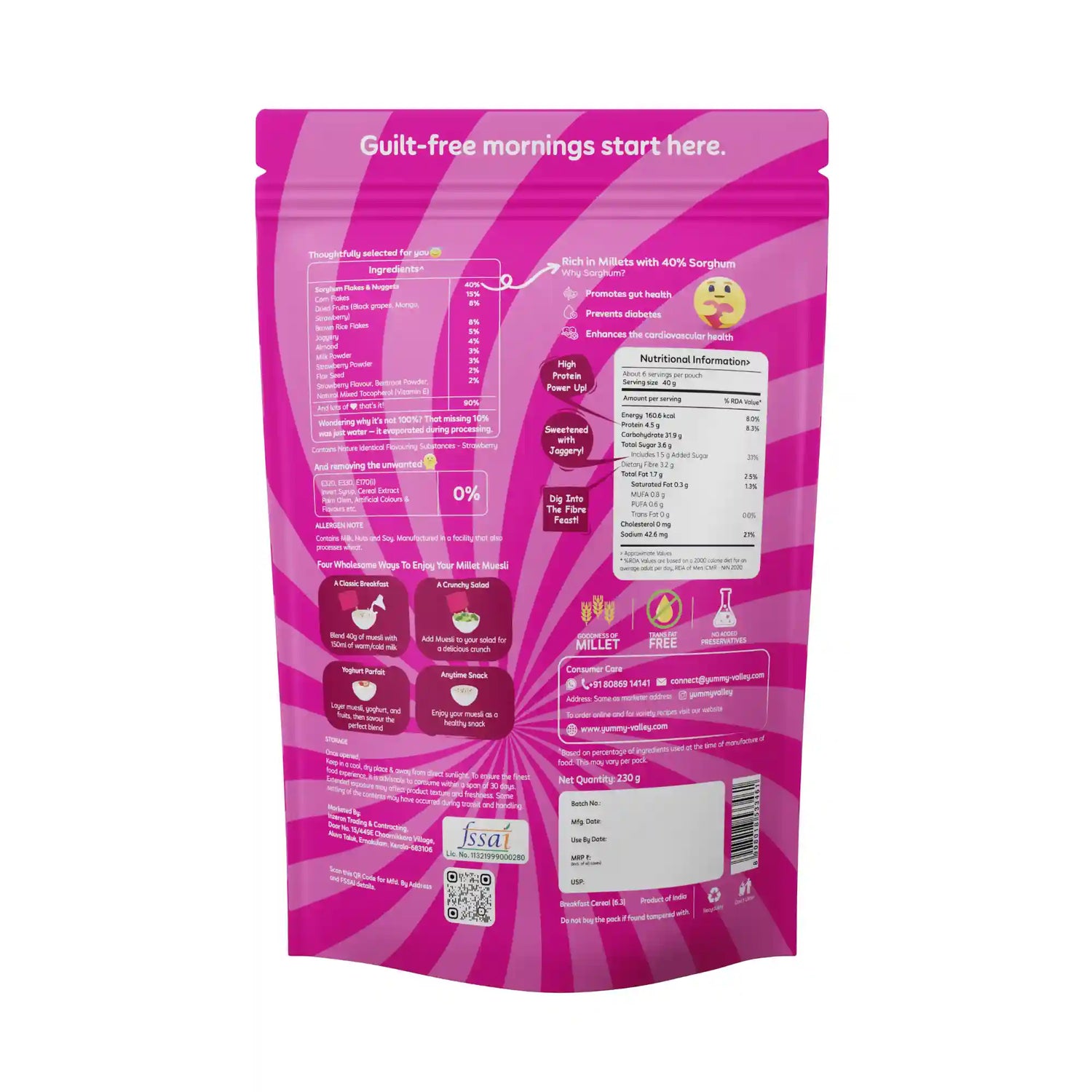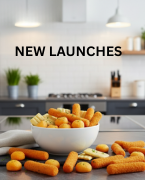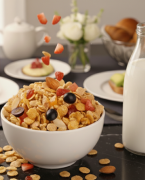Finger Millet or Ragi is one of the most nutritious whole grains which have been used as a staple food in India & Africa for centuries. Ragi, which is full of essential nutrients such as Calcium, Iron, Fiber, and Antioxidants, is often regarded as a superfood because of its phenomenal health benefits. Unlike refined grains, finger millet is high in slow-digesting carbohydrates, which makes it an ideal food for those desirous of weight management, diabetes control, and better health.
From strengthening bones to improving heart health and digestion, ragi can change the game for you. This article explores 10 Amazing Benefits of Finger Millet that will help you include this highly nutritious millet in your daily diet. Let’s dive in!
What Is Finger Millet (Ragi)?
Finger millet (Eleusine coracana), popularly known as ragi, is an extremely nourishing cereal grain member of the stress-resilient grass family Poaceae. Its scientific name is Eleusine coracana and it is cultivated in abundance in India, Africa, and some parts of Asia. Because of its excellent nutritional value, being a staple food for several regions!
Unlike refined grains, finger millet is whole, preserving its bran, germ and endosperm, and is a great source of fiber, essential amino acids, vitamins and minerals. It is especially recognized for being rich in calcium and iron, to support bones and avoid anemia. In addition, it is a gluten-free grain, providing a great nutritional alternative for individuals with gluten intolerance or celiac disease.
Moreover, ragi is a drought-resistant crop, requiring little water to grow and can survive extreme climatic conditions. It is a significant source of food for the farmers in dry areas. This traditional grain has yummilicious leavened and un-leavened dishes like ragi porridge, ragi rotis, ragi dosas, ragi laddoos, and even other baked products.
Today, finger millet is taking to centre stage of modern diets as a super food because of their extraordinary health advantages and ability to use in a variety of cooking. For anyone looking to control diabetes, aid in weight loss, or enhance general health, consuming ragi on a daily basis is extremely rewarding.
Finger Millet Nutritional Value (Per 100g)
According to the data based on IFCT (Indian Food Composition Tables) – National Institute of Nutrition (2017). Here is the Finger millet nutritional value per 100g:
| Nutrients | Value per 100g |
|---|---|
| Energy | 320 kcal |
| Dietary fibre | 11.18g |
| Carbohydrate | 66.82g |
| Total fat | 1.92g |
| Protein | 7.16g |
| Total folates | 34.66mcg |
| Vitamin B1 (thiamin) | 0.37mg |
| Vitamin B2 (riboflavin) | 0.17mg |
| Vitamin B6 (pyridoxine) | 0.05mg |
| Vitamin K | 0.9mcg |
| Phosphorus | 210mg |
| Manganese | 3.19mg |
| Potassium | 443mg |
| Zinc | 2.53mg |
| Calcium | 364mg |
| Iron | 4.62mg |
| Magnesium | 146mg |
Health Benefits of Finger Millet (Ragi)
Finger millet, also known as ragi, is a whole grain that is extremely nutritious and used in India and Africa for hundreds of years. Rich in vitamins, minerals, and fiber, it’s no wonder it’s known for its myriad of health benefits. Here are the comprehensive health advantages of including finger millet or ragi in your daily diet.
1. Rich Source of Nutrients
Packed with nutrients, Ragi is a source of calcium, iron, fiber, protein and amino acids. It also helps with Bone strength, Digestion and stamina, thus improving general health. It is one of the few grains that is high in calcium, which is essential for strong teeth and bones. Moreover, its high iron content prevents anemia, while dietary fiber facilitates digestion and maintains gut health.
2. Helps Strengthen Bones and Prevents Osteoporosis
Ragi is a rich source of calcium and plays a very important role in keeping our bones strong and healthy. In a 100 grams serving, ragi contains approximately 344 mg of calcium, offering a shot in the arm to those who cannot afford to consume dairy products. Osteoporosis, bone ailments, thriving children, pregnant women, and old people can prevent these diseases with a healthy ragi routine. It is also good for postmenopausal women, who are more susceptible to bone density loss.
3. Manages Diabetes and Maintains Blood Sugar Levels
It has a low glycemic index (GI) so it releases sugar into the bloodstream gradually, avoiding sudden spikes in blood glucose levels. This makes it a perfect grain for people who are diabetic or want to control their blood sugar level. Because ragi is bitter, has a high content of fiber content and slow down the digestive process that slows down the absorption of carbohydrates leads to stable levels of insulin. Regular consumption of ragi can reduce the risk of developing type 2 diabetes and improve metabolic health.
4. Aids in Weight Loss
Ragi is an extremely good addition to the diet chart of the people who are losing weight as it is rich in fiber and low in calories. Ragi contains fibrous that helps keep them feeling full, reducing hunger pangs and controlling excess eating. This greatly helps in keeping track of calories and supports fat loss. Ragi is also gluten-free, making it suitable for people with gluten sensitivity. Ragi is a good option to replace refined grains such as white rice and wheat grain, which help in weight management and also contributes to improving overall health.
5. Helps with Digestion and Gut Health
Ragi is a great source of dietary fiber, which is important for a healthy gut. Its role is to prevent constipation as well as to keep the gut working properly and to support the growth of beneficial bacteria. It also serves as a natural detoxifier, flushing away toxins from the system and promoting regular bowel movements. Ragi is beneficial for people with irritable bowel syndrome (IBS) or any other digestive issues.
6. Promotes Heart Health and Lowers Cholesterol
Both these factors can help reduce blood pressure, which is good for the heart health, and improve the cholesterol profile by lowering the bad cholesterol (LDL) and increasing good cholesterol (HDL). Ragi is a pack of fiber that prevents cholesterol deposition in arteries, thereby decreases the risk of heart diseases. Ragi is also loaded with antioxidants that can hinder oxidative stress and inflammation, both of which cause cardiovascular issues. It also aids in controlling blood pressure of hypertensive patients.
7. Prevents Anemia and Increases Energy
Ragi is also a good source of natural iron which is required for the formation of red blood cells and for preventing anemia. The benefit of this is especially helpful for women, children, and low hemoglobin people. Ragi can be eaten with vitamin C rich foods like lemon or oranges, as this enhances iron absorption. Moreover, ragi staves off hunger and gives sustained energy making ragi a wonderful food for athletes, growing children, and active individuals.
8. Improves Skin Health and Slows Aging
We have figured that there is a protein called Ragi, which has all the vital amino acids that support collagen formation in the skin, preventing drooping and aging. It is also packed with antioxidants that fight free radicals that can damage skin, leading to premature aging. Including ragi in your diet can also make your skin glow and may even prevent wrinkles and pigmentation. Additionally, its detoxifying properties play a role in achieving clear and healthy skin.
9. Promotes Mental Well-Being
Additionally, tryptophan, an amino acid in ragi, contributes to serotonin production, a neurotransmitter that promotes relaxation. Ragi is a great food for your mind as the grains have the tendency to reduce stress, anxiety, and depression. It also makes your sleep better, an important factor of health overall and cognitive function. Thus adding ragi to the diet can be beneficial for those suffering from stress-related disorders or sleep problems(p)
10. The Perfect Weaning Food for Babies
Ragi is often used for weaning babies, as it is very nutritious and easy to digest. Cow milk is a rich source of calcium, iron, protein, and other nutrients that are important for infant growth and development. Moreover, the immunity system of babies is also stronger due to it and so is their digestion. Ragi porridge is often the first solids fed to infants to strengthen body mass.
Also Read: 10 Amazing Benefits of Ragi For Babies
Checkout: Yummy Valley’s Sprouted Ragi Powder
What Are The Benefits Of Finger Millet For Skin?
Finger millet (ragi) provides outstanding benefits for skin health because of its antioxidant, amino acid, and vitamin content. It contains methionine and lysine, two key amino acids that encourage collagen production, helping with skin elasticity and preventing wrinkles and sagging. Rich in antioxidants, especially phenolic compounds, they help combat free radicals that in turn reduce signs of premature ageing like fine lines and pigmentation.
Ragi is also rich in vitamin E, that nourishes the skin, keeping it soft, supple and glowing. Also, it has natural anti-inflammatory characteristics that calm skin irritation and prevent acne outbreaks. Regular intake of ragi helps cleanse our internal organs, which in turn can beautify our skin.
What Are The Benefits Of Finger Millet For Female?
Finger millet (ragi) is good for women at all stages of life, so it is a delicious and healthy addition to their diet. High in calcium, ragi aids bone formation and prevents osteoporosis, especially in women post-menopause, as they may face reduced bone density. The high iron content promotes hemoglobin, preventing anemia, a common problem in women. Ragi has good amount of dietary fiber which helps in digestion and gut health plus suppressing hunger pangs and thus managing weight.
Furthermore, ragi being low on glycemic index highly advantageous for women suffering from (Polycystic Ovary Syndrome) PCOS and diabetic women as it manages the blood sugar. It also has essential amino acids and antioxidants that help maintain healthy skin and hair, postpone aging and lower stress. Pregnant and lactating women can reap the benefits of iron-rich ragi, as it is a rich source of energy and nutrients and becomes a key aspect for both maternal and fetal growth. Finger millet offers a wide range of nutrients, making it a great grain for a woman fitness enthusiast.
Uses Of Finger Millet and Applications
Finger millet, also known as ragi, is a versatile cereal that can be used in various ways. Here are some of the common uses and applications of finger millet:
- Traditional Eats: Across Africa and Asia, it’s a kitchen staple for making porridge, bread, cakes, and even malt and beer. In places like India, Nepal, and Sri Lanka, it’s a key player in dishes like roti, dosa, idli, and laddu. Beyond taste, it’s prized for its nutrition, medicinal value, and cultural significance.
- Rice Alternative: Looking for an alternative to rice? Ragi’s got your back. Similar texture and taste, but is packed with extra health goodies like being gluten-free, low on the glycemic index, and loaded with protein, calcium, iron, and antioxidants. Use it like rice or get creative – turn it into noodles, pasta, or even couscous. And yes, it’s versatile enough for breakfast cereals, snacks, or desserts too.
- Feeding Time: Don’t count out the straw! It’s a hit with cattle, sheep, goats, horses, and poultry, boosting their digestion, milk production, and egg quality. Bonus: it’s soft, absorbent, and eco-friendly, making it a comfy bedding option.
From the plate to the farm, finger millet does it all. Mix it up with other grains, legumes, fruits, veggies, nuts, seeds, spices, and herbs to whip up tasty and nutritious dishes that’ll keep you coming back for more.
Finger Millet Recipes
1. Finger Millet Dosa: A Crispy and Healthy Breakfast

A finger millet dosa, also called ragi dosa, isn’t just delicious – it’s a breakfast powerhouse. Packed with finger millet flour, rice flour, and urad dal flour, it’s gluten-free and packed with protein, calcium, iron, and antioxidants. Super easy to make and awesome with chutney, sambar, or whatever floats your flavour boat!
Ingredients
- 1 cup finger millet flour
- 1/4 cup rice flour
- 1/4 cup urad dal flour
- Salt to taste
- Water as needed
- Oil for greasing
- Cumin seeds for sprinkling
Instructions
- In a large bowl, mix the finger millet flour, rice flour, urad dal flour, and salt. Add water gradually and whisk well to make a thin and smooth batter. Let it rest for 15 minutes.
- Get your non-stick tawa or griddle heating up on medium-high heat and give it a light oiling. Sprinkle some cumin seeds on it, then pour a ladleful of batter. Spread it out evenly in a nice, thin circle by moving your ladle around.
- Spray a little oil around the edges and let it sit until it gets that beautiful golden crunch. After flipping it over, let it chill for a minute. Repeat with the remaining batter.
- Serve hot with your preferred accompaniment.
Recipe Notes
- For an extra kick in your dosa, toss in some chopped onion, green chilli, ginger, and curry leaves into the batter. They’ll bring in more flavour and texture to amp up your breakfast game.
- If you’re aiming for a tangier and fluffier dosa, try fermenting the batter overnight. Mix in some yoghurt or buttermilk, then let it sit in a cosy spot. By morning, if it needs it, add a bit of water and tweak the salt to your taste. Your dosa will thank you for the extra time!
- You can also make instant finger millet dosa by using only finger millet flour and water. Just mix them well and cook as above.
2. Finger Millet Pakoda: A Crispy and Spicy Snack

Ever tried finger millet pakoda, aka ragi pakoda? It’s not just crispy and spicy – it’s a flavour explosion! Whip it up with finger millet flour, gram flour, onion, green chilli, ginger, curry leaves, and a bunch of spices. This snack is a gluten-free champ, packed with fibre, iron, and antioxidants. Easy to make and perfect for tea time or as a stellar appetizer. Dip it in ketchup or chutney for the full experience!
Ingredients
- 1 cup finger millet flour
- 1/2 cup gram flour
- 1 onion, finely chopped
- 2 green chillies, finely chopped
- 1 inch ginger, grated
- A few curry leaves, chopped
- Salt to taste
- 1/4 teaspoon turmeric powder
- 1/2 teaspoon red chilli powder
- A pinch of asafoetida
- A pinch of baking soda
- Water as needed
- Oil for frying
Instructions
- Grab a huge bowl and toss in the ingredients.
- Stir it all together until it becomes thick, then slowly
- Add water until it becomes smooth.
- Pour some oil into the frying pan.
- Heat it on medium-high.
- Drop small spoonfuls of that batter into the hot oil and sizzle away until they’re that gorgeous golden crispy! Enjoy the crispy bites
- Give ’em a flip now and then for that even cook.
- Once they’re looking perfect, take ’em out of the oil and let them chill out on a paper towel to drain off any excess oil. Serve these crispy bites hot with your favourite dip.
- Enjoy the goodness!
Recipe Notes
- Feel free to throw in some extra veggies like carrots, cabbage, or spinach into the batter. They’ll amp up both the nutrition and the flavour.
- Want to tweak the spice level? Adjust the green chilli and red chilli powder to match your taste buds.
- Looking for a healthier option? Try making these pakodas in an air fryer or oven. Just give ’em a light spray of oil and bake at 180°C for about 15 to 20 minutes until they’re nice and crispy. Healthy snacking at its finest!
3. Finger Millet Malt: A Refreshing and Energizing Drink
Ever tried finger millet malt or ragi malt? It’s a tasty blend of finger millet flour, milk, water, sugar, and a pinch of cardamom powder.
Ingredients
- 1/4 cup finger millet flour
- 2 cups milk
- 2 cups water
- 2 tablespoons sugar
- 1/4 teaspoon cardamom powder
Instructions
- Roast the finger millet flour in a pan over low heat until it turns slightly brown and aromatic. Stir constantly to avoid burning. Throw everything in the blender and turn it on for a second.
- Add water, milk, sugar, and cardamom powder. Blitz it until it’s super smooth and all bubbly.
- Then, pour that mix into a pan and crank up the heat. Let it bubble away for about 10 minutes, stirring now and then until it’s nice and thick – just like you want it!
- Serve hot or chilled in glasses.
Recipe Notes
- Want to jazz up the flavours? Go wild with additions like vanilla, cocoa, or saffron to mix things up and give it an extra punch.
- Thinking of a dairy-free twist? Try almond milk, soy milk, or coconut milk for a dairy-free twist! Vegan vibes, coming right up.
- And hey, if sweetness is your jam, play around with the sugar levels. More, less, just right – it’s your call! Make that malt dance to your taste buds’ beat.
Side Effects Of Finger Millet (Ragi)
Excessive ragi consumption may elevate oxalic acid levels, posing risks for those with kidney stones. Not recommended for such individuals, ragi is rich in nutrients, promoting overall health and relaxation for optimal bodily function.
Here are some of the potential side effects of finger millet:
1. May Cause Kidney Stones
The calcium in finger millet can amp up oxalic acid in your body, potentially leading to kidney stones. If you’ve had kidney stones or urinary calculi, it might be best to limit or skip finger millet. Staying hydrated is crucial too, helping to flush out those excess oxalates.
2. May Cause Thyroid Issues
Finger millet contains goitrogens, compounds that can throw a wrench in thyroid hormone production and function. For folks with thyroid issues like hypothyroidism or hyperthyroidism, it’s smart to chat with a doctor before adding finger millet to your plate. It might affect how your thyroid works and your medication needs.
3. Goiter Concerns
Goiter, when your thyroid swells due to low iodine, isn’t best pals with finger millet. If you’re at risk or dealing with goitre, cutting back on finger millet might be wise. Instead, consider iodine-rich foods like seafood, dairy, and eggs, and toss in some iodized salt to keep your iodine levels in check.
4. May Cause Digestive Issues
Finger millet has high fibre content, which can cause digestive problems such as bloating, gas, and diarrhoea in some individuals, especially those with sensitive stomachs. The best way to overcome this issue is to start with small portions and gradually increase to adapt.
5. May Cause Allergic Reactions
While it may be rare, some individuals may have an allergy to finger millet, experiencing symptoms such as hives, itching, swelling, and difficulty breathing. If you have any concerns or show any sign of allergies then immediately consult with a doctor and take proper medication.
FAQ: Finger Millet (Ragi)
Finger millet, or ragi, brings a lot to the table in terms of health benefits like protein, calcium, iron, and antioxidants. Here are some FAQs and their answers about finger millet:
Is it advisable to consume Finger Millet at night?
Finger millet packs in proteins and complex carbohydrates, which take their time to digest and get absorbed in the body. For optimal absorption and nutrient uptake, it’s best to have ragi during breakfast in the morning or as part of your lunch in the afternoon. This way, the active stomach acid during these times can assist in better digestion and nutrient absorption from ragi.
Does adding Finger Millet to a meal increase weight?
No, Finger Millet can help in weight loss, as it has dietary fibre, complex carbs, and proteins that make you feel full and delay hunger. Finger Millet also helps in regulating blood sugar levels and maintaining bone health, which are important for weight management.
Is Finger Millet good for antenatal women?
Yes, Finger Millet is very beneficial for pregnant and lactating women, as it has sprouted ragi, which enhances the nutritional value of ragi. Sprouted Finger Millet stimulates milk production in lactating women and supports the health of pregnant women.
What are the ways I can incorporate Finger Millet into my meal plan?
Finger Millet is a versatile cereal that can be used in various forms and dishes. You can have ragi as idli, dosa, roti, porridge, or ragi balls, mixed with different ingredients, such as milk, spices, and vegetables. Finger Millet can also be used to make snacks, desserts, and beverages.



